Welcome to a world where lush greenery and aromatic delights thrive just steps away from your kitchen! Whether you’re a newcomer eager to cultivate your first basil plant or a seasoned gardener looking to expand your indoor oasis, “Tips for Growing Herbs Indoors” is your guide to transforming any space into a fragrant, flavorful haven. By delving into this rich compilation, you’ll discover a treasure trove of techniques and insights that not only enhance your gardening skills but also breathe life into your home.
Imagine the satisfaction of snipping fresh mint for your morning tea or adding a sprig of rosemary to a simmering stew, all grown by your own nurturing hands. This guide empowers you with the confidence to cultivate vibrant herbs, offering practical advice that ensures your indoor garden flourishes, regardless of your experience level. As you explore the joys of indoor herb gardening, you’ll find that the rewards are as endless as they are delightful, from adding a splash of nature to your décor to elevating your culinary creations.
Choose South-Facing Windowsills
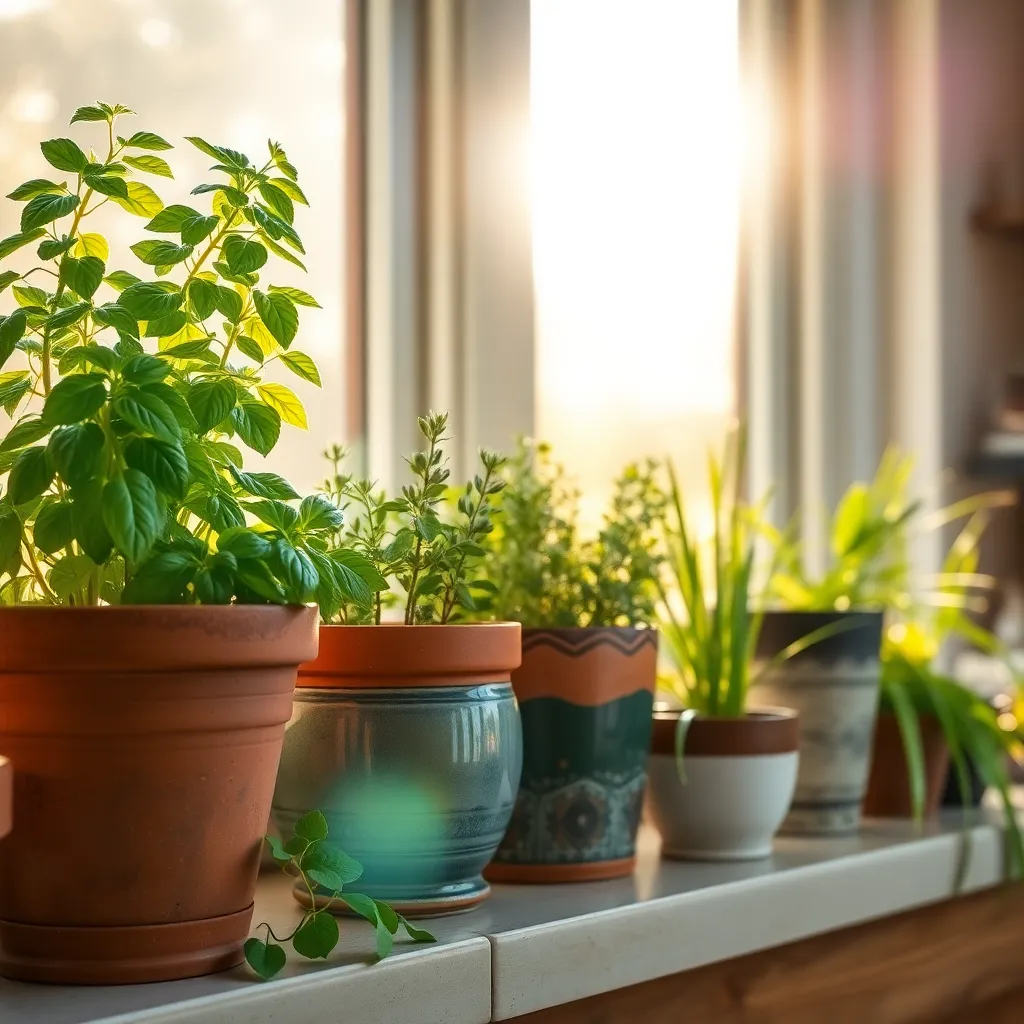
A south-facing windowsill is ideal for growing herbs indoors because it provides the most sunlight throughout the day. Most herbs, like basil, rosemary, and thyme, require at least six hours of direct sunlight to thrive, making a sunny location crucial for their growth.
You can maximize the light exposure by placing your herbs directly on the windowsill or using a plant stand to elevate them. If natural light is insufficient, especially during winter months, consider supplementing with a grow light to ensure your herbs receive adequate illumination.
Proper container selection is essential when growing herbs indoors. Choose pots with drainage holes to prevent waterlogging, and use a lightweight, well-draining potting mix specifically designed for indoor plants.
Watering is another critical aspect of herb care. It’s important to water herbs only when the top inch of soil feels dry to the touch, as overwatering can lead to root rot.
Use Well-Draining Potting Mix
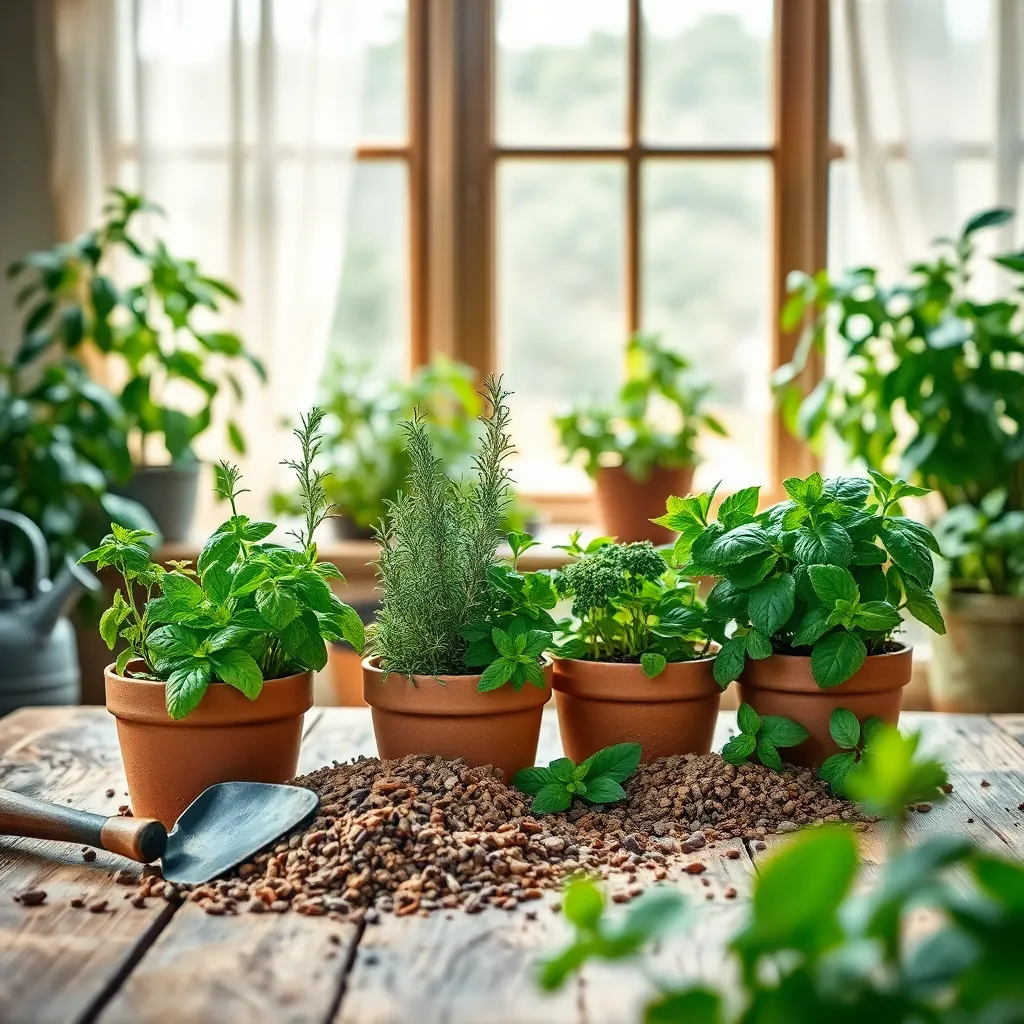
To ensure your indoor herbs thrive, using a well-draining potting mix is crucial. It prevents water from accumulating at the roots, which can lead to root rot and other issues.
Choose a potting mix specifically labeled for herbs or container gardening, as these are designed to drain efficiently while retaining necessary moisture. Adding materials like perlite or coarse sand can enhance drainage if your mix seems too compact.
When selecting a potting mix, look for a blend that includes peat moss, vermiculite, and coconut coir. These ingredients help maintain a balanced moisture level, ensuring your herbs receive adequate hydration without waterlogging.
For gardeners seeking advanced care, consider testing the potting mix by squeezing a handful—if it crumbles easily, it’s well-draining. In contrast, if it clumps together, consider amending it with additional drainage materials.
Prune Regularly for Bushier Growth
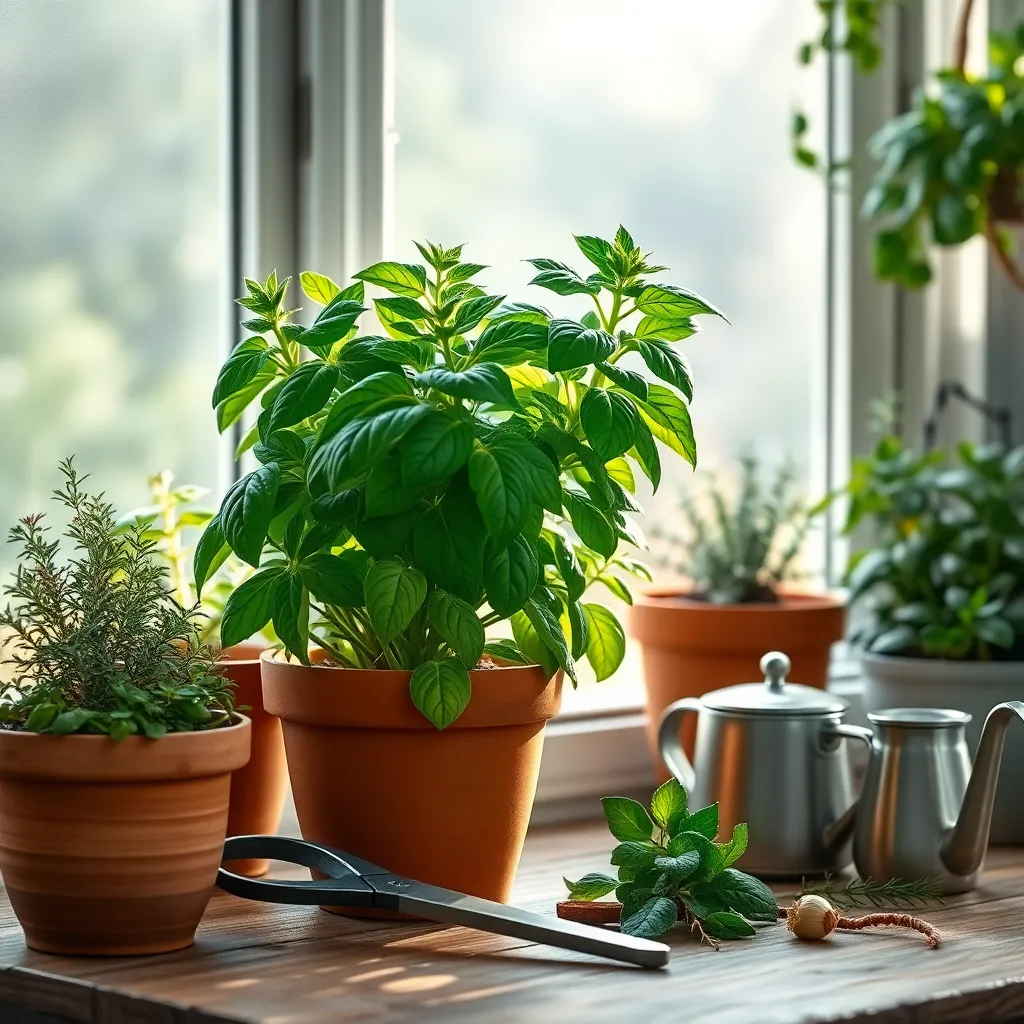
Regular pruning is essential to encourage lush and bushy growth in indoor herb gardens. When you prune, you’re essentially giving your plants a signal to grow more, resulting in denser foliage.
To start, use a sharp pair of scissors or pruning shears to snip off the top few inches of your herb plants. Cut just above a leaf node, which is the point where leaves attach to the stem; this will stimulate the plant to branch out more effectively.
Many herbs such as basil, mint, and oregano benefit greatly from regular pruning. By removing the top growth, you not only promote bushiness but also prevent the plants from becoming leggy and sparse.
Advanced gardeners might want to try pinching back their herbs every few weeks. This gentle technique involves using your fingers to nip off new growth and can lead to even fuller plants over time.
Rotate Pots for Even Light
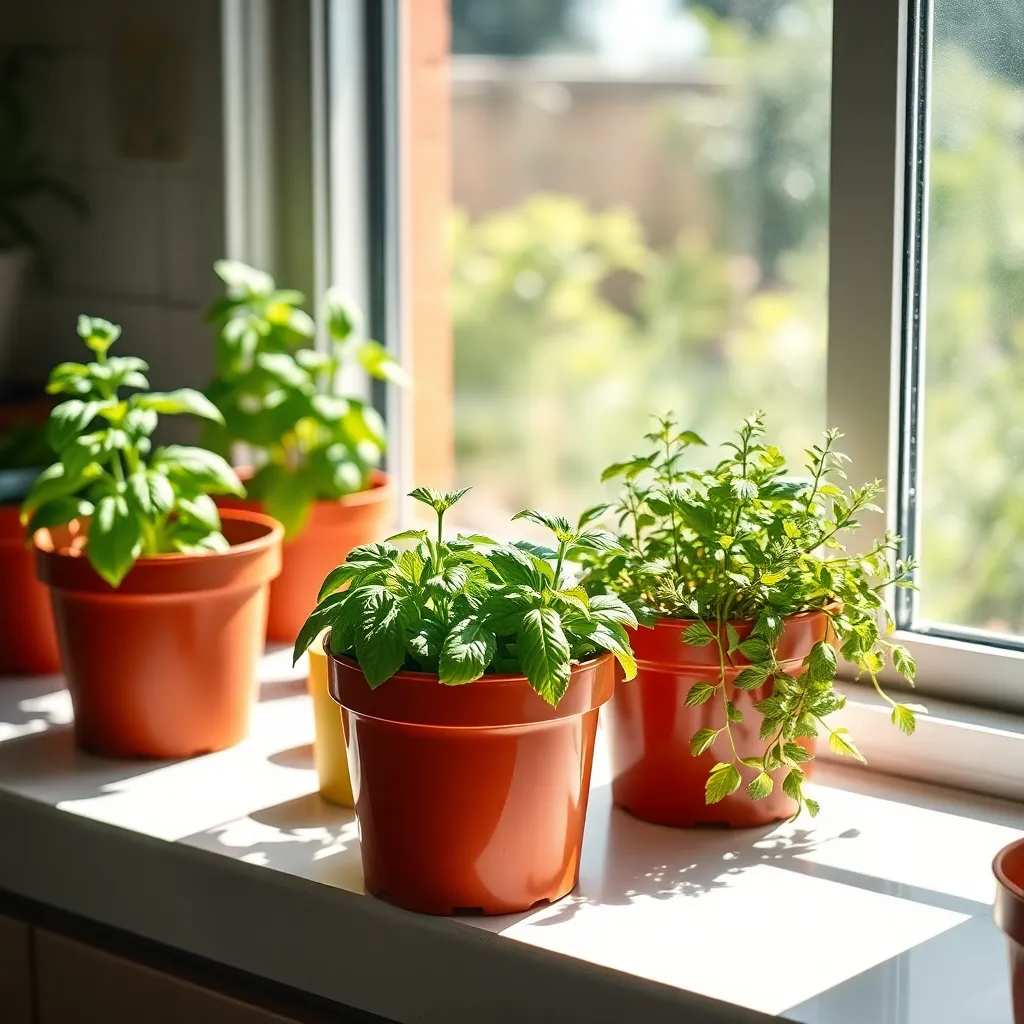
In indoor gardening, ensuring your herbs receive even light is crucial for healthy growth. One simple yet effective technique is to rotate your pots regularly to prevent uneven growth patterns.
Plants naturally grow towards light, which can cause them to lean if not rotated. By turning your pots a quarter turn every week, you encourage uniform growth and help your herbs stay balanced and upright.
For beginners, a good rule of thumb is to rotate your pots each time you water your plants. This habit not only keeps your herbs looking their best but also ensures that all sides receive equal exposure to light.
Advanced gardeners can take this a step further by monitoring the light intensity in their homes. Using a light meter can help you determine the optimal spots for your herbs, thus maximizing their growth potential.
Water When Soil Feels Dry
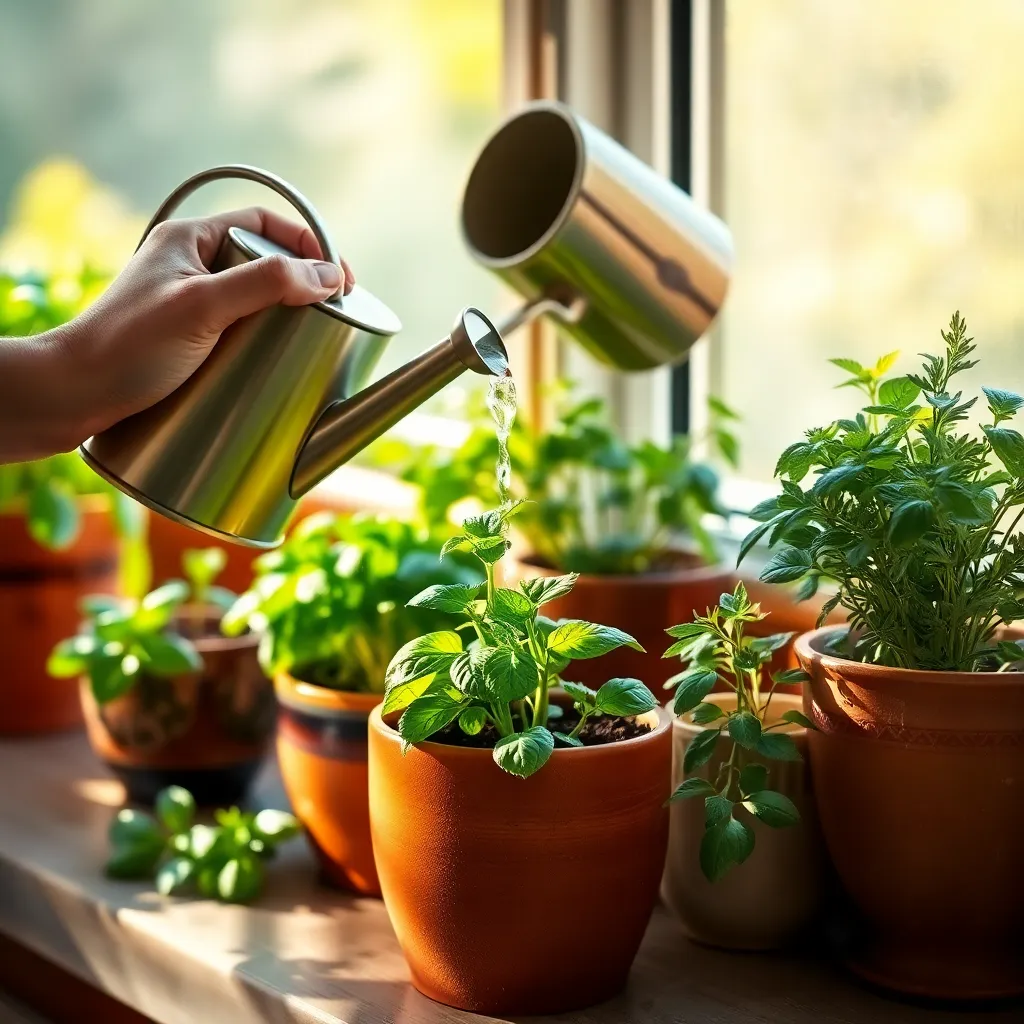
Watering your indoor herbs effectively is crucial for their growth and health. A simple yet effective method is to water when the soil feels dry to the touch, approximately an inch below the surface.
To test the soil moisture, insert your finger into the soil up to the first knuckle. If it feels dry at this depth, it’s time to water your herbs.
For beginners, this technique helps prevent overwatering, which is a common problem with indoor plants. Overwatering can lead to root rot, a serious issue that can harm or even kill your herbs.
Advanced gardeners might consider using a moisture meter for more precise measurements. These devices can offer a more accurate assessment of the moisture level deep in the soil.
Different herbs have varying water needs, so it’s important to adjust your watering schedule accordingly. For instance, Mediterranean herbs like rosemary and thyme prefer slightly drier conditions compared to basil or mint.
To further help your herbs thrive, ensure your pots have proper drainage. Use containers with drainage holes and a suitable potting mix to facilitate proper water flow.
Conclusion: Growing Success with These Plants
In nurturing the vibrant journey of growing herbs indoors, we’ve explored five essential relationship concepts: creating a supportive environment, understanding individual needs, fostering consistent communication, celebrating small victories, and embracing patience and resilience. Just as herbs flourish with the right care and attention, so too do our relationships. To take immediate action, consider setting aside time this week to assess the “environment” of your relationship—whether it’s physical space, emotional climate, or both—and identify one simple change that can enhance growth.
As you embark on this nurturing journey, remember to save or bookmark this article. It will serve as a valuable guide, offering insights and reminders to help cultivate both your herb garden and your relationships. Looking forward, envision a space where your relationships thrive with the same vitality and abundance as your indoor garden. Embrace the journey with confidence, knowing that each small, intentional step you take brings you closer to a flourishing partnership. Let this be your guide to both green and relational growth, reminding you of the beauty that blooms from mindful care and attention.

